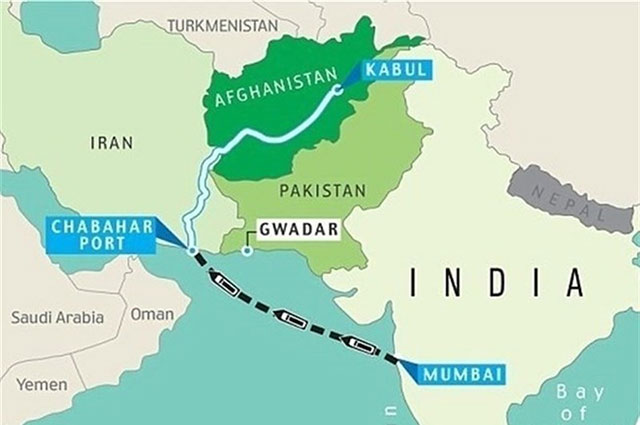
Uzbekistan Assesses Investment Risks in Iran’s Chabahar Port / Photo: Tasminnews
Uzbekistan Assesses Investment Risks in Iran’s Chabahar Port
Tashkent, Uzbekistan (UzDaily.com) — The Jamestown Foundation, a U.S.-based analytical center, has published an article titled “Uzbekistan Assesses Investment Risks in Iran’s Chabahar Port.”
The article notes that on 29 September 2025, the U.S. Department of State reinstated sanctions against Iran’s Chabahar Port. According to Jamestown Foundation analysts, this move reflects Washington’s “maximum pressure” policy aimed at isolating the Iranian regime. The new sanctions create significant obstacles to the port’s development, affecting not only Iran’s economic interests but also those of countries such as India and Russia, which are involved in projects linked to the port.
Chabahar Port holds strategic importance for the International North–South Transport Corridor (INSTC) connecting India, Iran, and Russia. This corridor aims to accelerate trade among the countries, providing an alternative to maritime routes via Europe or China.
In May 2024, India signed a 10-year contract with Iran to manage Chabahar Port, committing an additional US$370 million in infrastructure investments. Experts at Jamestown Foundation note that this step demonstrates New Delhi’s intention to consolidate its presence in the Eurasian region and secure access to Central Asia via southern routes.
Trade between India and Central Asia amounted to US$1.7 billion in 2023, with Uzbekistan being the largest buyer of Indian goods in the region. In 2024, bilateral trade between Uzbekistan and India approached US$1 billion, and both countries are considering expanding this volume through the new Uzbekistan–Turkmenistan–Iran–India multimodal corridor, which would utilize Chabahar Port.
Since 2020, Tashkent has participated in trilateral negotiations with New Delhi and Tehran on the joint use of Chabahar, a deep-water port with direct access to the Indian Ocean. In 2023, the parties agreed to create a logistics center, terminals, and warehouse facilities at the port. However, as Jamestown Foundation notes, these plans have yet to be implemented, reflecting Uzbekistan’s cautious approach to investing in Iranian infrastructure.
“The reinstatement of U.S. sanctions is likely to increase Tashkent’s caution,” analysts note. “Nevertheless, Uzbekistan is unlikely to abandon its assessment of Chabahar’s transit potential, as it seeks to diversify its southern transport routes and reduce risks associated with security and logistics costs.”
On September 9, 2025, the first trilateral political consultations were held in Tehran between Iran, India, and Uzbekistan. The parties discussed effective utilization of Iran’s port and transport capacities, but, as the Jamestown Foundation notes, the Uzbek delegation did not mention investment projects in Chabahar, signaling persisting concerns.
Experts estimate that direct investments by Uzbekistan in the port are unlikely to be economically justified: the country accounts for only 5.5% of cargo turnover between Central Asia and India, while Kazakhstan and Turkmenistan handle 90% of the trade.
At the same time, Uzbekistan is developing an alternative project — the Trans-Afghan Transport Corridor, connecting Russia, Central Asia, Afghanistan, and Pakistan with access to the Indian Ocean. This route, running along Termez–Naibabad–Maidanshahr–Logar–Kharlachi, is estimated at US$7 billion and is projected to transport up to 22 million tons of cargo annually by 2030.
The Jamestown Foundation highlights that Tashkent actively promotes this corridor as part of the initiative to create a unified transport space within the SCO, integrating railway networks of member countries. Despite challenging conditions in Afghanistan, Uzbekistan views this corridor as a long-term strategic alternative to Chabahar, reinforcing its position as a key regional logistics hub.